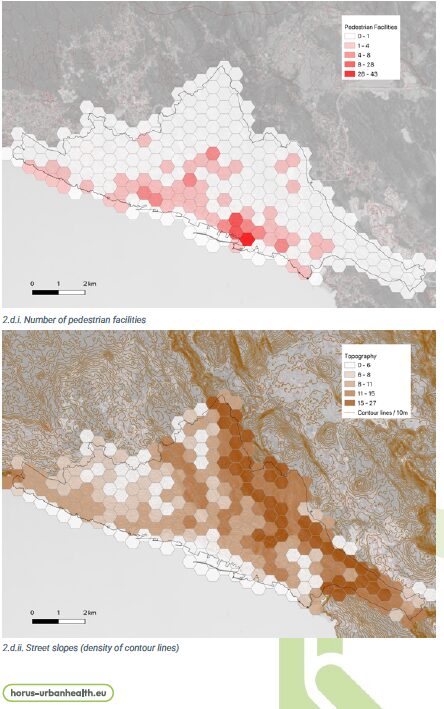How does the design of our cities influence our health? The latest report from the HORUS project uncovers the relationship between urban characteristics and behaviors linked to non-communicable diseases (NCDs) within the HORUS task on Characterisation of urban environments. Focusing on the pilot cities of Rijeka, Rotterdam, and Valencia, this research highlights the key urban features that shape our well-being.
The objectives of this deliverable are to:
• Present the process of data collection and analysis in each one of the urban areas, to assess these characteristics.
• Visualise these analyses in a collection of thematic maps.
Discover the Highlights:
- Identifying Key Urban Features: Dive into our comprehensive review of the literature to understand which aspects of urban environments influence NCD risk behaviors. This section reveals the urban attributes that have the most significant impact on our health. Following the deliverable goal on providing an overview of the urban characteristics or attributes that are found to influence NCD risk behaviour, following a comprehensive review of the literature.
- Detailed City Analysis: Explore how we collected and analyzed data from each city. Learn about the unique characteristics of Rijeka, Rotterdam, and Valencia and how these elements were evaluated to assess their influence on health behaviors. Following the objective of processing of data collection and analysis in each one of the urban areas, to assess these characteristics.
- Vibrant Thematic Maps: See our findings come to life through a series of thematic maps. These visualizations provide a clear and engaging way to understand the connections between city design and health behaviors. Following a third objective on enabling easy visualization of these analyses in a collection of thematic maps.
Why This Report Matters:
Urban planning and design are pivotal in shaping the environments where we live, work, and play. Understanding how these factors influence health behaviors is crucial for creating cities that promote well-being. Our findings offer valuable insights for urban planners, health professionals, and anyone interested in the future of healthy living.
Get the Full Picture:
Led by Bax & Company, this report is structured to provide clear, actionable insights:
- Section 1: Summarizes the literature review, highlighting the urban characteristics that influence NCD risk behaviors.
- Section 2: Details the data collection and analysis process for each city.
- Section 3: Presents the thematic maps that illustrate our findings.
Explore the Full Report and Thematic Maps Here
Join us in this exploration of how urban design can create healthier, more vibrant cities. Whether you’re an urban planner, a health advocate, or simply curious about how your city affects your health, the HORUS project offers compelling insights into the future of urban health.


